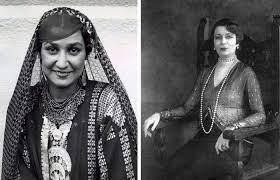Talli
Talli is a traditional embroidery craft practiced by women of Upper Egypt 9Sohag and Assuit governorates). It uses metal thread, a special handmade needle, and special fabric (Traditionally black or white). The stitches of Talli produce motifs (shapes and patterns that represent the basic units of intangible culture and social meanings within and for its community.), There are several tally motifs (around 60 documented so far) reflecting a wide range of historical, ideological, environmental, and cultural components. Motifs are continuously repeated by all practitioners, they reveal shared taste, communal interest, and local identity of the community, the most common are; the bride, camel, waves, crescent, moon, kilim, palm tree, bell, wheat spikes). One notices in a piece of work the aspects of intangible culture and their continuity through history leading to contemporary living. Traditionally, Talli prices were determined upon its weight as the more it is full of embroidery the more it is heavy and needs effort, material, and time.
Presently the end product takes the forms of shawls, dresses, and fewer, items for houses and public spaces. Its original traditional usage was limited to bridal veils and dresses, due to social change and communication it is now used by fashion designers and worn by celebrities, still, it is now widespread due to its high price. The element has two main social functions: economic and decorative. It is an income-generating activity that enhances the social role of women by making them economically viable thus raising their social status within their respective communities. The decorative function encompasses the cultural meanings attached to the element related to wearing occasions, social status, and motifs.



